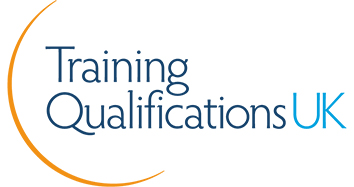Anatomy and Physiology - Advanced
 85.5%
85.5%
- SALE Savings End Midnight Tuesday 20th January
- SALE Savings End Midnight Tuesday 20th January
Anatomy and Physiology - Advanced
This course at a glance
- Gain an in-depth understanding of the human body
- Learn about the skeletal, muscular, and nervous systems
- Explore how the body uses food for energy
- Understand the anatomy and function of the heart and brain
- No prior experience or qualifications needed
- Study online, at home, at your own pace
About your course
Getting started
Modules
The Skeletal System
- Describe the main functions of the skeletal system
- Identify the types of bone that make up the skeletal system
- Identify the 5 main types of bone classification
- Explain the structure of skeletal tissue
- Describe the development of bone
Joints
- What is a joint
- Main types of joint
- Synovial joints – their common characteristics and movement patterns
- Anatomical position
- Degrees of freedom of joints
- Planes of the body
- Training the skeleton
The Muscular System
- Identify the three types of muscle tissue
- Properties of skeletal muscle
- Describe the functions of skeletal muscle
- Identify different muscles shapes
- What is the role of the muscle fibres
- Identify the types of muscular contraction
- Identify the structure of skeletal muscles
- Explain the Sliding Filament Theory
- Describe how muscle contraction is initiated
- The all or none law
- Explain how muscle contraction is controlled
The Chemistry of Using Food to Provide Energy for the Body
- How the food we eat is taken apart and utilised to provide energy
- How food molecules are transported to cells where they will be used
Cellular Energy
- Describe where the energy to drive cellular activity comes from
- Explain what mitochondria are and how they function
- Explain where mitochondria are thought to have originated
The Heart
- Describe the anatomical position of the heart, its size and its structure
- Explain the passage of blood flow through the heart
- Identify the mechanisms of the heart beat and how it is controlled
- Describe the cardiac cycle
- Describe how the heart is trained
- Identify the main arteries that supply the heart with blood
- Describe the relationship between the heart and blood pressure
The Brain
- Summarise the functions of the central nervous system
- Identify the structure and function of the five main parts of the brain
- Explain the function of the ventricles of the brain
- Explain the role of the meninges and cerebrospinal fluid
The Spinal Cord
- Explain the structure and function of the spinal cord
- Identify the peripheral nerves
- Explain the type, function and distribution of the twelve cranial nerves
- Explain the function and route of the spinal nerves
Neurones
- Describe the structure of a typical neuron
- Identify different types of neuron and explain their functions
- Explain the function of nerve endings
- Identify the electrical and chemical factors essential in the functioning of nerve tissue
Voluntary and Reflex Actions and the Automatic Nervous System
- Explain the anatomical difference between a voluntary movement and a reflex action
- Explain the roles of the sympathetic and parasympathetic nervous systems
- Identify the functions of the autonomic nervous system
Entry Requirements
There is no experience or previous qualifications required for enrolment on this course. It is available to all students, of all academic backgrounds.
All course fees, inclusive of all payment plans including our Premium Credit Limited option, must be settled before certification can be ordered.
*You will have access to the course for 24 months.

After each lesson, there will be a question paper, which needs to be completed and submitted for marking. This method of continual assessment ensures that you can consistently monitor your progress throughout the duration of the course. This will help you master the material from this advanced anatomy and physiology course.
On successful completion of your course you will receive the learndirect Certificate of Completion of Training in Anatomy and Physiology - Advanced.
Your course certificate will also state the number of CPD points/hours the course is eligible for.
View a sample of the certificate (opens in new window)
learndirect is one of the largest integrated providers of courses and qualifications, training, and employment services in the UK
- Each year around 6,000 businesses equip their staff for success with learndirect
- learndirect have helped more than 75,000 businesses equip their employees with the skills needed to improve productivity.
- Almost 700,000 maths and English test passes have been achieved with learndirect.
- 300,000 people fulfilled their career ambitions last year with learndirect.
- Over 250,000 apprentices have achieved with learndirect.
Career
This online course for anatomy and physiology is designed for those seeking a more advanced understanding of the human body. While it doesn't lead to a formal vocational qualification, it provides an excellent foundation of knowledge for a wide range of careers. Whether you work in healthcare, fitness, or complementary therapies, a strong understanding of anatomy and physiology is essential. This course can serve as a stepping stone to further education or help you enhance your existing professional skills.
Frequently Asked Questions
- SALE Savings End Midnight Tuesday 20th January
- SALE Savings End Midnight Tuesday 20th January
Anatomy and Physiology - Advanced
This course at a glance
- Gain an in-depth understanding of the human body
- Learn about the skeletal, muscular, and nervous systems
- Explore how the body uses food for energy
- Understand the anatomy and function of the heart and brain
- No prior experience or qualifications needed
- Study online, at home, at your own pace
About your course
Getting started
Modules
The Skeletal System
- Describe the main functions of the skeletal system
- Identify the types of bone that make up the skeletal system
- Identify the 5 main types of bone classification
- Explain the structure of skeletal tissue
- Describe the development of bone
Joints
- What is a joint
- Main types of joint
- Synovial joints – their common characteristics and movement patterns
- Anatomical position
- Degrees of freedom of joints
- Planes of the body
- Training the skeleton
The Muscular System
- Identify the three types of muscle tissue
- Properties of skeletal muscle
- Describe the functions of skeletal muscle
- Identify different muscles shapes
- What is the role of the muscle fibres
- Identify the types of muscular contraction
- Identify the structure of skeletal muscles
- Explain the Sliding Filament Theory
- Describe how muscle contraction is initiated
- The all or none law
- Explain how muscle contraction is controlled
The Chemistry of Using Food to Provide Energy for the Body
- How the food we eat is taken apart and utilised to provide energy
- How food molecules are transported to cells where they will be used
Cellular Energy
- Describe where the energy to drive cellular activity comes from
- Explain what mitochondria are and how they function
- Explain where mitochondria are thought to have originated
The Heart
- Describe the anatomical position of the heart, its size and its structure
- Explain the passage of blood flow through the heart
- Identify the mechanisms of the heart beat and how it is controlled
- Describe the cardiac cycle
- Describe how the heart is trained
- Identify the main arteries that supply the heart with blood
- Describe the relationship between the heart and blood pressure
The Brain
- Summarise the functions of the central nervous system
- Identify the structure and function of the five main parts of the brain
- Explain the function of the ventricles of the brain
- Explain the role of the meninges and cerebrospinal fluid
The Spinal Cord
- Explain the structure and function of the spinal cord
- Identify the peripheral nerves
- Explain the type, function and distribution of the twelve cranial nerves
- Explain the function and route of the spinal nerves
Neurones
- Describe the structure of a typical neuron
- Identify different types of neuron and explain their functions
- Explain the function of nerve endings
- Identify the electrical and chemical factors essential in the functioning of nerve tissue
Voluntary and Reflex Actions and the Automatic Nervous System
- Explain the anatomical difference between a voluntary movement and a reflex action
- Explain the roles of the sympathetic and parasympathetic nervous systems
- Identify the functions of the autonomic nervous system
Entry Requirements
There is no experience or previous qualifications required for enrolment on this course. It is available to all students, of all academic backgrounds.
All course fees, inclusive of all payment plans including our Premium Credit Limited option, must be settled before certification can be ordered.
*You will have access to the course for 24 months.

Assessment
After each lesson, there will be a question paper, which needs to be completed and submitted for marking. This method of continual assessment ensures that you can consistently monitor your progress throughout the duration of the course. This will help you master the material from this advanced anatomy and physiology course.
Qualifications
On successful completion of your course you will receive the learndirect Certificate of Completion of Training in Anatomy and Physiology - Advanced.
Your course certificate will also state the number of CPD points/hours the course is eligible for.
View a sample of the certificate (opens in new window)
learndirect is one of the largest integrated providers of courses and qualifications, training, and employment services in the UK
- Each year around 6,000 businesses equip their staff for success with learndirect
- learndirect have helped more than 75,000 businesses equip their employees with the skills needed to improve productivity.
- Almost 700,000 maths and English test passes have been achieved with learndirect.
- 300,000 people fulfilled their career ambitions last year with learndirect.
- Over 250,000 apprentices have achieved with learndirect.
Career
This online course for anatomy and physiology is designed for those seeking a more advanced understanding of the human body. While it doesn't lead to a formal vocational qualification, it provides an excellent foundation of knowledge for a wide range of careers. Whether you work in healthcare, fitness, or complementary therapies, a strong understanding of anatomy and physiology is essential. This course can serve as a stepping stone to further education or help you enhance your existing professional skills.
Frequently Asked Questions
 85.5%
85.5%
learning
learning hours





















 If you find this course cheaper anywhere
If you find this course cheaper anywhere

